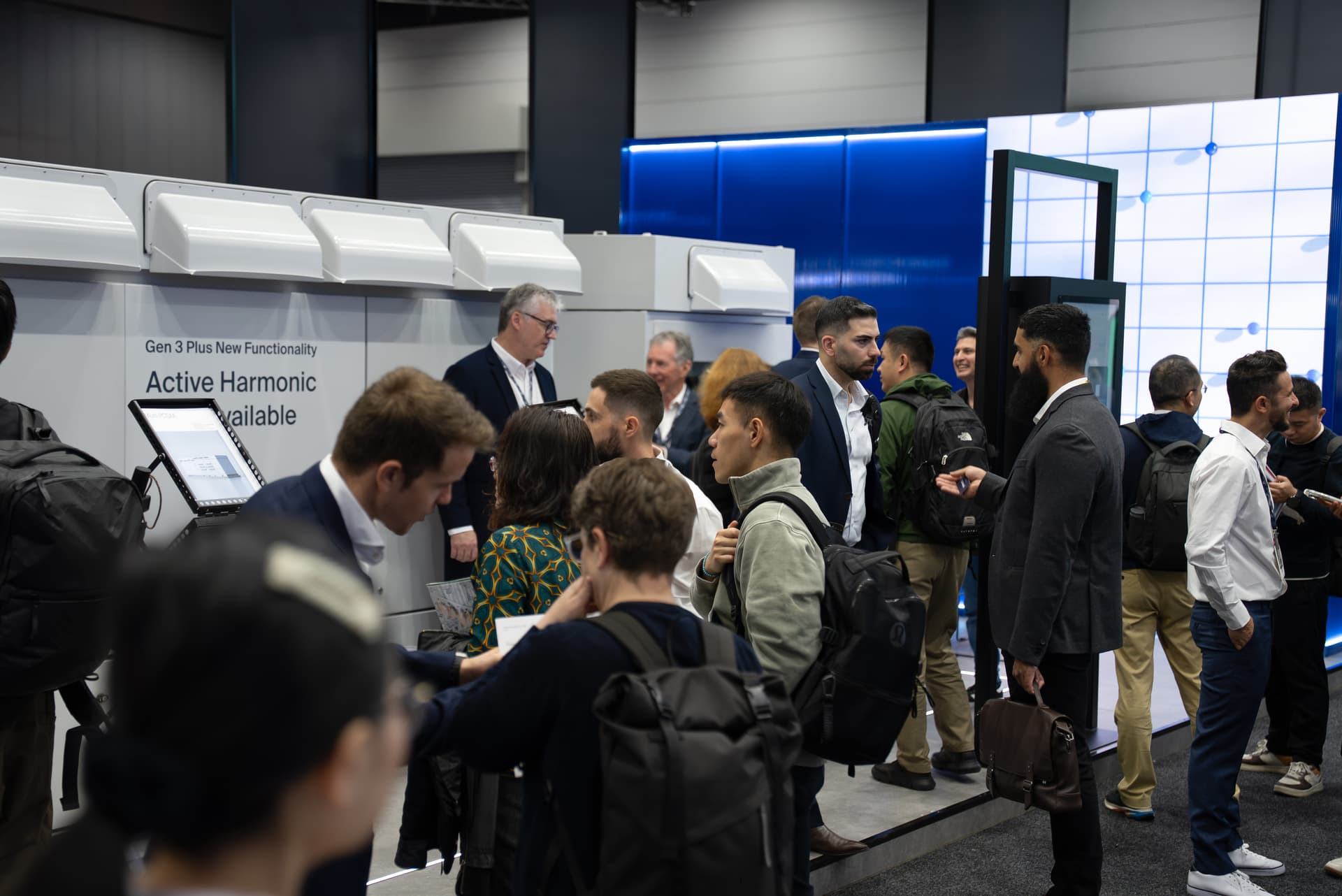October 31, 2025
Power Electronics Drives Australia’s Renewable Future at All Energy Exhibition
The multinational company showcased its complete portfolio of solutions in solar, energy storage, and electric mobility at All Energy Australia 2025—technologies designed to reinforce grid stability and accelerate Australia’s transition to an 82% renewable grid by 2030.

Power Electronics marked a significant milestone at All Energy Australia 2025, held in Melbourne on October 29–30.
The two-day exhibition served as a strategic platform for the multinational to engage with industry leaders and showcase its broad portfolio of solutions tailored to Australia’s energy transition. The event reinforced Power Electronics’ position as a benchmark in renewable energy innovation across the Southern Hemisphere.
Commitment to the Australian Market
Power Electronics’ strong local presence and deep market experience were a central theme at the event. David O'Donoghue, Managing Director of Power Electronics Australia, emphasized the company’s crucial role in the region:
"Australia is a vital market for the global energy transition, and our long-standing local presence is key. With over 30 years of experience here, our dedicated Australian team, backed by our global expertise, is uniquely positioned to deliver the high-tech, reliable solutions needed to secure an 82% renewable grid by 2030. Our success at All Energy Australia confirms the market’s demand for high-quality technology and robust local support." This commitment is reflected in tangible milestones: over 8 GW of solar and BESS projects deployed, 5 GW commissioned in the last 12 months, and participation in major 500 MW+ BESS initiatives.
Grid Forming: A Game-Changer for Grid Stability
As Australia moves toward its ambitious goal of reaching 82% renewable electricity by 2030, the challenge of maintaining grid stability becomes increasingly critical. Historically, the grid has relied on large synchronous generators from fossil fuel plants to provide inherent stability. But with the rise of solar and battery energy storage systems (BESS), new solutions are required to ensure a resilient and reliable network.
Power Electronics is leading this transformation with its Grid Forming solutions—a breakthrough approach that enables renewable energy systems to behave like traditional power plants. Unlike conventional inverters that simply follow the grid’s voltage and frequency, Grid Forming inverters can establish and maintain their own stable voltage, allowing them to support, stabilize, and even restore the grid after a blackout.
This capability is especially relevant in Australia, a global leader in renewable energy integration. With a high volume of large-scale solar and BESS projects, and a grid undergoing rapid decentralization, Grid Forming is not just an innovation—it’s a strategic necessity. This technical excellence is further cemented by the Active Harmonic Filtering feature now available with the GEN 3 Plus solutions. In addition, Power Electronics technology is now Data Centers Ready, with UPS mode, extending its reliability to critical infrastructures that demand continuous power supply.
“Australia is not just adopting new solutions; it's actively shaping the future of the grid,” said Ander García, Grid Connection Manager. “The level of maturity and the sheer scale of the projects here make it a vital market for us to be in.”
At the core of Power Electronics’ Grid Forming offering is the PCSM battery inverter, a high-performance solution with power ratings of up to 5.15 MVA. It supports up to four independent Battery Energy Storage Systems (BESS), multiple voltage levels, and operates efficiently across a wide range of environmental conditions. Its advanced control features and overload capacity make it ideal for demanding Grid Forming applications.
Complementing the PCSM is the Reverse DC Coupling architecture, which connects the DC/DC converter directly to the inverter. This setup enables seamless integration of solar PV and batteries, optimizing energy flows and enhancing system flexibility—critical for hybrid projects that require both reliability and scalability.
These Grid Forming solutions are already delivering results on the ground, positioning Power Electronics as a key partner in some of Australia’s most ambitious BESS initiatives.
Electric Mobility and Strategic Expansion
Beyond grid solutions, Power Electronics also presented its latest Electric Mobility solutions, including the NB Station, the Standalone NB 400 ultra-fast charger, and its Megawatt Charging System (MCS) for heavy-duty electric vehicle fleets—reinforcing its role in the decarbonization of transport.
In line with the growing demand for sustainable mobility, the company is expanding its business development team in Australia, with the goal of accelerating the deployment of its eMobility solutions across the region. This strategic move reflects Power Electronics’ commitment to supporting the electrification of transport infrastructure and offering high-performance charging solutions tailored to local needs.
By combining its expertise in power electronics with a strong local presence, the company is positioned to play a key role in enabling large-scale EV adoption and supporting Australia’s broader energy transition.



